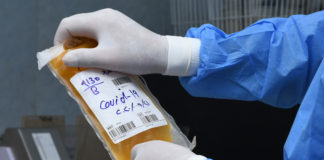
Human bodies don’t come with instruction manuals, a deficit that is rarely more frustrating than when it comes to the ins and outs of sex.
While we’re all left to figure out for ourselves what feels good, science can only try to point us in the right direction. Or, in the case of a survey of more than 3,000 women in the US, four directions.
Written by a team of researchers in association with the online education company OMGYes, this latest ‘Pleasure Report’ distills a multitude of shared experiences into a few suggestions on how to get a little more out of playtime.
If the report’s name sounds familiar, that’s because this isn’t OMGYes’s first time at the science rodeo. Back in 2017, it published the results of its first Pleasure Report, where the opinions of 1,000 women gave us a breakdown on touch and sexual pleasure.
This second study changes course slightly, looking less at where to touch, and more at ways to bend and position the body to get the most out of penetration.
“We asked thousands of women what they do to experience more pleasure from penetrative sex and found there are four techniques that work for most women,” says sexual and reproductive health scientist, Christiana von Hippel.
“Our company, OMGYES.com, gave them descriptive names and created tasteful diagrams, animations and videos of women of all ages explaining their own experiences.”
OMGYes has been teaching owners of vulvas and vaginas how to get maximum enjoyment out of their body bits for years now, rising to fame with a little help from Emma Watson’s admission in 2016 that she was a subscriber.
Their goal is to promote a clear and factually informed perspective that treats sexual pleasure as a fundamental right, rather than a medical or psychological issue to be solved.
Using statistical tools to ensure those sampled by the online survey represented a broader adult population of cis and transgender women (gay, bi, and straight) the researchers came up with four techniques that made penetrative sex – either solo or the kind you do with company – more enjoyable.
Dubbed Angling, Rocking, Shallowing, and Pairing, they stand out from suggestions provided by other scientific studies that tend to scaffold pleasure around specific sexual acts, or the involvement of specific objects or body parts.
Here, it’s the choreography that has center stage. The props, scenery, and actors are all up to the individual.
For example, 87.5 percent of the respondents claimed Angling did it for them – rotating or elevating the pelvis just right to find a position where the toy, penis, or digits touch just right.
Around three quarters of those surveyed advocated Rocking, an action defined by movements that help the base of the penis or toy rub consistently against the clitoris during penetration.
Still not it? About 84 percent of those in the study enjoy a penetrative touch towards the outside of the vagina, dubbed Shallowing.
Lastly, there’s also Pairing activity: Just under 70 percent of survey participants claimed they thoroughly enjoyed having their clitoris stimulated with a toy or finger while being penetrated.
Of course none of these are a sure-fire recipe for getting off, either employed on their own or in combination. Bodies are all wired in unique ways, after all, with one person’s ‘Big O’ being another’s ‘Big Yawn’.
But in a society where even discussing sexual satisfaction – especially for women – is impeded by ambiguous language, myths popularized in pornography, or a culture of shame, having a few clear, explicit terms at hand is a critical place to start.
“We hope bringing this important knowledge out of the shadows into the light of day with clear language will empower women to better recognize, communicate and act on what they want,” says von Hippel.
Being the second Pleasure Report, we can only hope there’ll be more chapters in this exploration of human sexuality in the future. It’s about as close to an operations manual for our pleasure-parts as any of us are likely to get, after all.
This research is published in PLOS One.








